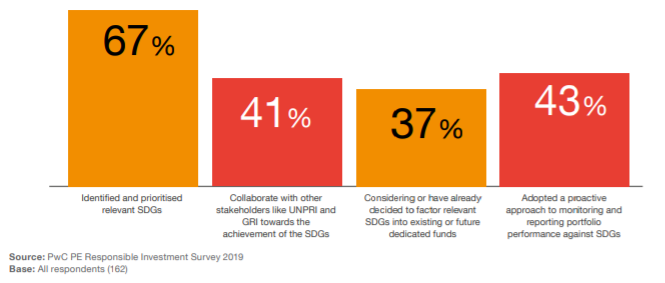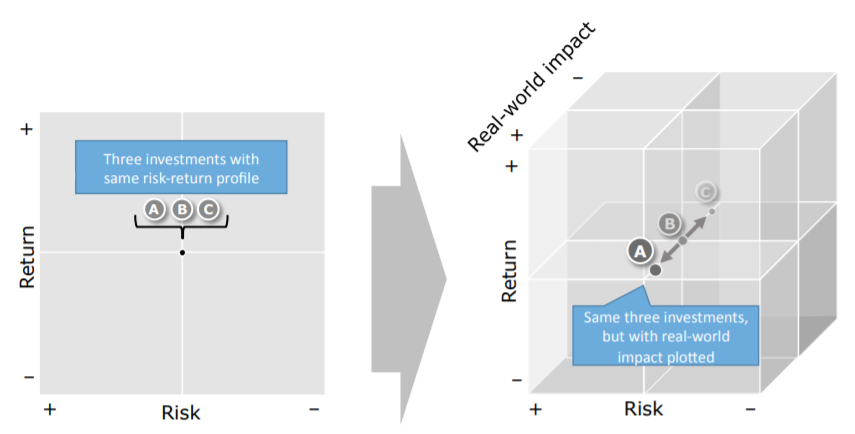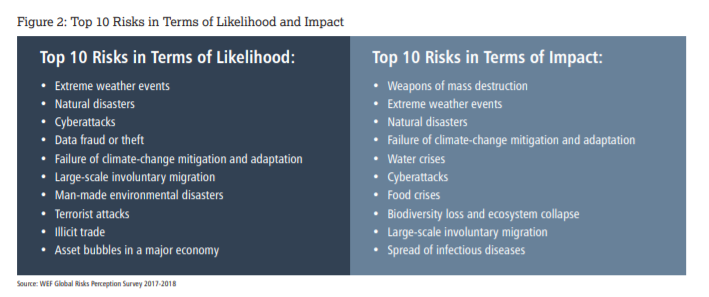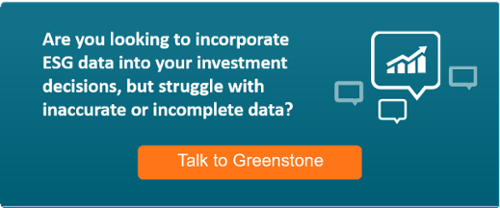How are the Sustainable Development Goals (SDGs) influencing responsible investment?
In a recent report published by PwC, 67% of Private Equity (PE) firms said the Sustainable Development Goals (SDGs) are relevant to their investments. This is compared to only 38% when surveyed in 2016. [1]
It is clear that the incorporation of Environmental, Social and Governance (ESG) factors is becoming increasingly important in investments. In this blog, we look at specifically how the SDGs are influencing responsible investment.

Figure 1 – Respondents answers to "What actions, if any is your firm taking to contribute to the achievement of the SDGs?"
What are the SDGs?
In September 2015, the UN General Assembly adopted the 2030 Agenda for Sustainable Development that included 17 Sustainable Development Goals (SDGs). Building on the principle of “leaving no one behind”, the new Agenda emphasizes a holistic approach to achieving sustainable development for all.
The SDGs are made up of 17 goals that recognise that ending poverty and other deprivations must go hand-in-hand with strategies that improve health and education, reduce inequality, and spur economic growth, all while tackling climate change and working to preserve oceans and forests. They are an urgent call for action by all countries, developed and developing to create a global partnership to achieve these goals.
Why are the SDGs attracting investors?
According to the UN PRI, it is no longer applicable to plot simply risk and return for an asset. It is now important to add a third dimension of the real world impact, which includes the incorporation of ESG factors.

Figure 2 - Risk and return of an asset, with additional factor of real-world impact.
Increasingly, the effect of the problems the SDGs are trying to solve will be one of the biggest influencers of the real world impact. As seen in the table below, these feature heavily in the top 10 risks in terms of likelihood and impact.

Figure 3 - The top 10 risks in terms of likelihood and impact
The SDGs provide a good guide and framework to evaluate risk and opportunity within an optimal portfolio. This is due to their presence across a wide variety of asset classes, markets and locations. They are wholly inclusive in terms of their ESG aims due to the inherent nature of their underlying principles [2].
The SDGs provide risk mitigation on both a macro and micro economic level. Large institutional investors with heavily diversified portfolios have returns that rely on a healthy global economy. They can improve their long term financial goals by adhering to the SDGs. There is also a case that the SDGs will actually drive global economic growth as they create a viable and positive future, and therefore successful returns will rely heavily on them.
On a micro scale, a siginificant proportion of external costs, such as environmental damage or social upheaval, may be forced into companies accounts. The uncertainty surrounding this, means the landscape is a difficult and risky one. This is pushing investors more towards ESG data and responsible investment to safeguard their future returns.
The SDGs can also provide a common language and framework for new investment opportunities in asset classes such as clean tech, green bonds and low-carbon infrastructure, which are projected to become increasingly important in the future [3].
Governments are also predicted to begin altering their policies and regulations surrounding investments. To reduce this political risk within a portfolio, investors can align them with the SDGs. When the SDGs are taken into account within a portfolio, it makes them far more robust.
UN PRI report on responsible investment with the SDGs
UN PRI have developed a framework with step-by-step information on how to develop tools to encourage responsible investment using the SDGs, in The SDG Investment Case Report.
References & Sources
As an active supporter of the UN Global Compact, Greenstone promotes engagement with the UN Sustainable Development Goals (SDGs). Through Greenstone’s sustainability software solution, users can streamline data collection and gather, manage and report data to help them understand their contributions to all 17 of the UNSDGs
Visit our Frameworks & Standards content library aiming to keep you informed with the latest industry updates and learn more about the available sustainability and ESG frameworks and standards to support your company's reporting.










